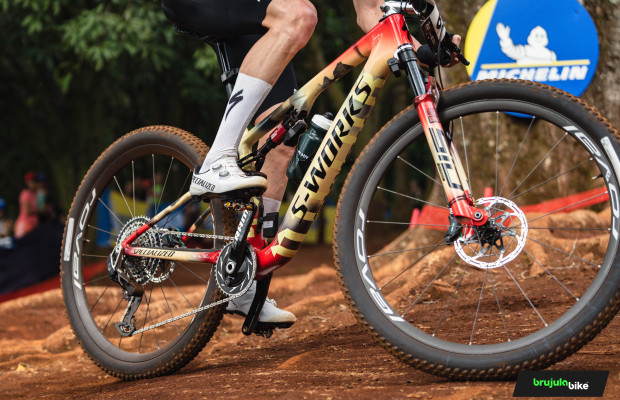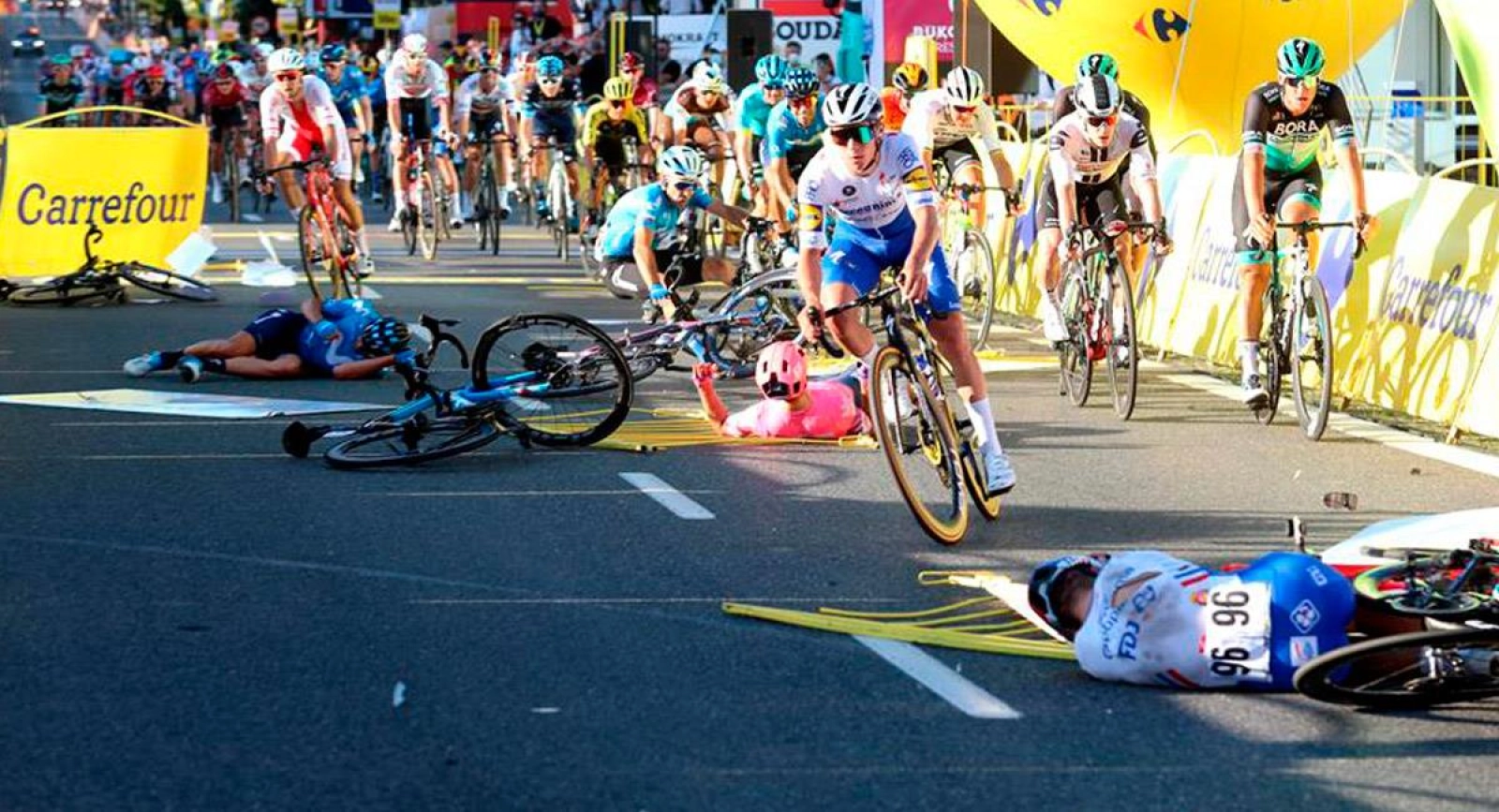The UCI will begin to limit developments in racing and it could be a headache for brands and teams
Measures continue to be announced in favor of safety in racing by the UCI. If a few days ago the limitation of the minimum width of handlebars or the maximum wheel profile that can be used in racing was approved, now the pilot project that will be carried out in some races to limit the maximum development that cyclists can use in road tests is coming to light.

The development limitation proposed by the UCI has unexpected implications
If the limitation announced a few days ago of the minimum handlebar widths generated the anger of biomechanics who pointed out that it had been taken arbitrarily without taking into account small cyclists, girls, and young people, the pilot proposal that the UCI will carry out to limit the maximum developments of the bikes is a headache for teams that mount SRAM groups as well as for tire choice.
A few months ago, the possibility that the UCI would limit bike developments at the proposal of SafeR began to be discussed, an organization created to improve safety in races. A proposal that some cyclists like Wout van Aert or Chris Froome advocated for reducing speed in races to reduce dangerous situations.
RECOMENDADO

How many days should a cyclist rest per week?

Some reasons to stay away from the road in winter

S-Works: what does it really mean and where does Specialized's most exclusive label come from?

The best apps for cycling and mountain biking

Why wider tires in gravel are faster

Black Friday 2025 cycling bargains: save on Garmin, POC, Maxxis and more

Now the UCI will try to limit the development of bikes in some races by setting a maximum development of 10.46 meters per pedal stroke, which is equivalent to a 54x11, a common ratio in Shimano Dura-Ace groups used by most road teams. However, those who use SRAM also use the same chainring with the difference that SRAM groups have cassettes that start at a 10-tooth cog, providing a brutal development of 11.50 meters per pedal stroke.
The solution for these teams would be to use smaller chainrings, but cyclists are reluctant to do so, as when the SRAM Red AXS 12v was launched, for which professionals were expected to use a 50-tooth chainring, which, combined with a 10-tooth cog, results in a slightly longer development than the 54x11. However, as we said, this ratio received complaints from cyclists due to the large jump between 50x11 and 50x10 on one hand, and the lower mechanical efficiency of using a smaller chainring on the other.

Another option for teams using SRAM would be to limit the use of the 10-tooth cog, which would effectively leave them with an 11-speed group, a step back, and of course, only if the UCI accepts this measure, which would require technical verification by the commissioners before each race.
Furthermore, this limitation established solely based on a figure of meters per pedal stroke has other implications. As you know, the development, that is, the meters covered in each complete turn of the cranks, is calculated by dividing the teeth of the chainring by those of the cog to obtain the gear ratio. A figure that is multiplied by the wheel circumference to obtain the development.

Well, those 10.46 meters per pedal stroke that the UCI intends to set as a maximum are obtained with the 54x11 and a 700x28c tire, the current standard in road cycling. However, some cyclists were already starting to use 30mm tires in their daily rides, which increases the development for the same gear ratio as the effective wheel diameter grows, thus also violating the development limitation. Not to mention the 33 or 35 tires that have been seen in the cobbled classics, which would be even more illegal if the limitation proposed by the UCI were to succeed.
The feeling from the outside is that the UCI, once again, has rushed to legislate, although in this case it is only a pilot project, without considering all the implications. It is also curious that now they seek to limit the maximum development that professionals can use when not long ago the traditional or illogical limitation of bikes in the cadet category was eliminated, which forced cyclists to ride at truly ridiculous cadences and did not reduce the speed of their races.